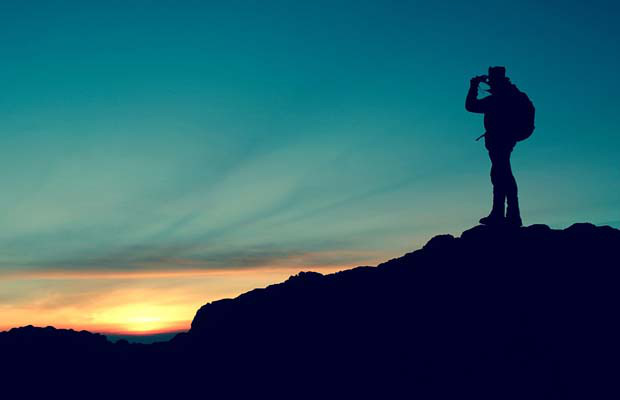A growing number of people are planning for bad things to happen. We take care to study the threats we see around us including those both very likely and some not as likely. We do this so we can try to be prepared for events that put ourselves or our family or friends in danger. Our preparations require some study of the potential events you see affecting you, the development of plans for mitigating the risks of these events and actions to place your readiness above where it is now. We prepare.
Most prepping, when you look at the activities of a majority of people, is largely study – via prepper blogs, movies and internet searches and the purchasing of survival supplies. It is fine for me to sit here and make the most marvelous plans for whisking my family to safety, but just as with anything in life, if I don’t practice that plan I could fail miserably. Have you ever sworn you knew something cold but at the moment you were called on to deliver this knowledge inside of your head, your mind went blank? That pause, the frozen – deer in the headlights look is not what you want to be showing when lives are on the line. The best way to prevent freezing up is to get out and practice survival now when there is no risk to your safety.
The survival tips below are suggestions on how you can move from the planning and preparing phase to actual readiness as much as possible. We all need to get out from behind the computer and get out in the world. Nothing can guaranty you will survive any and all manner of emergencies. If you blow your knee out and a giant wall of water is 50 feet away, you are likely going for a swim, but if you take time now to immerse yourself somewhat in the situations you fear, it can make your chances of survival much higher and increase your faith in your own abilities.
Get in shape – Not this one again! Yes, I know it has been beaten to death but there is a reason why people from every survival website, prepping blog, TV show, movie, survival expert or prepper fiction author and podcast host will bring up physical fitness. There is a reason why the most highly trained warriors I can imagine, our Special Forces are in such great physical shape, they exercise. A lot. Now, I am not advocating you start anything near to a Navy Seal workout program, Lord knows I am not the pinnacle of fitness. I don’t believe you have to be a ripped, buff, Soldier of Fortune centerfold model, but lets agree that your worst case scenario is likely going to require you to be at the top of your game. Do what you can now to get into shape. There won’t be any gym memberships when the world ends.
Hike through different conditions – Bugging Out is a universal concept in Prepping and you may be ready to grab your BOB, lace up your hiking boots, strap on your trusty Semi-Automatic weapon and head out in the forest, but you might want to try other conditions as well. I don’t live in the desert, but if SHTF, I could find myself needing to cross one to survive or make it back home. Don’t just hike around your neighborhood, go to a state park, in another state. Get experience with hiking different terrain. Try different weather conditions also. We might cancel a weekend backpacking trip if the forecast called for rain or snow, but going out and experiencing these conditions will give you more knowledge with what works and what doesn’t. Real life experience is far better than reading any manual or how-to.
Your watch can be a compass – Yes, you don’t need to carry a fancy Suunto Compass, but they do come in handy. If you are in the Northern Hemisphere and you find yourself lost (without a compass), you can use a watch to tell you which way is north. This can even work with digital watches and smart phones with a little imagination. This short video explains how.
Go it alone – I am all for going camping with friends or family, but there is also something to be said for going out on your own, especially if you are afraid of being alone. If this is you, plan a simple, safe trip out for a night. Make sure you plan everything out and let people know where you are going and when you will return. A night in the woods alone, especially when it is cold outside can be an interesting experience. I have hunted like this on more than one occasion and even though I wasn’t afraid of being alone, the trips out and back with nobody but yourself to rely on left me with a sense of accomplishment. It’s a small thing but confidence is important to the mental aspect of survival.
Turn off the lights and get comfortable with the dark – Are you afraid of being in the dark? Get over that fear right now. When you are out camping alone, turn off the lights and try navigating around your camp in the dark for a while. Take that headlamp with you for safety, but try living without the light for a night and see how you get by. When the batteries are all dead or if electronics have been made inoperable due to an EMP, you will appreciate the experience. You will also be able to quickly see how much light that campfire puts off and how it never gets to the places you really need it to.
Top off the tank to stay warm – If you want to stay a little warmer on cold nights you can try a couple of different tricks before laying down in that sleeping bag. You could knock out 20 push ups, do 30 jumping jacks or just bound around your campsite for a minute to get your internal heat up. Not to the point of sweating, but just enough to get the blood circulating and a slight temperature increase. Another option is to eat snacks before going to sleep. This will keep you warmer as the body works to digest the food and will help you get better night’s sleep.
Don’t ditch your clothes – If you are lost in hotter climates, don’t leave all your clothes behind. Clothing can protect you from the elements and nighttime temperatures almost always drop way down. In the desert, temperatures can drop 60 degrees from daytime highs to nighttime lows so while during the day you may have thought all you needed was that bathing suit top and some shorts, you will wish you had more layers.
Melt snow with your body heat – You might not be able to start a fire to melt snow, but you can melt it with your own body heat. Place snow in a container and put that in your sleeping bag with you. Make sure this isn’t touching your skin but the heat from your body will warm that snow up and give you drinking water even without a source of fire.
Layer Up – to avoid bites from mosquitoes – Mosquitoes are the bane of my existence. I must be naturally yummy to them because they find me out during the summer months. Flies and mosquitoes are the only bad things about summer for me, but they sure can ruin a party. If you are like me, layer up to avoid their thirsty little beaks. Two layers of cool fabric will keep the mosquitoes at bay and keep you from getting bitten. In malaria locations, this could also keep you healthy.
Sunglasses for snow or homemade goggles – If you are lost in the snow and don’t have any eye protection from the glare, you could develop snow blindness. Snow blindness is when your cornea gets burned by Ultraviolet rays and symptoms could include a temporary loss of vision. Losing your eyesight is probably one of the worst things to happen if you are in a survival situation. Yes, I know getting eaten by a bear is worse, but we can prevent the risk of sun blindness by making your own DIY snow goggles from the bark of a tree or other material you have with you. I have seen cardboard used and even the trusty bandana. This short video explains the process.
Grass can keep you alive – I am not talking about the kind of grass you mow in your front yards, but grass has been used by people in colder climates for ages to keep warm and dry. In the book, Arctic Clothing, the writer relates a story about the Yup’ik people in Alaska using grass as lifesaving insulation under clothing when a person is cold and wet in the wilderness. By placing grass inside your clothes it acts as a barrier to the cold and moisture keeping the freezing water off your skin. Grass can also be used to keep feet warm and dry by wrapping your feet with grass and then putting them into your shoes.
Let the dogs out – Cold and wet feet can quickly put you out of commission so keeping them dry and free of frostbite in colder conditions is vital. Don’t sleep with your boots on. Take your boots and socks off if your feet are sweaty and wet. This will allow your feet to dry and if your boots are wet you can put them into your sleeping bag with you to dry them out. When you wake up your feet should be in much better shape.
Walk the walk – Practice what you are planning to do for survival. We usually discuss training with respect to firearm proficiency or medical skills but living outdoors, navigating in the wilderness, hauling all of your supplies on your back and making it home safely should be skills that you train yourself in as well. If walking into the wilderness causes you stress, take charge of that now while you can. Get out of your comfort zone while it is reasonably safe to do so and tackle these challenges now before you are confronted with them on someone else’s terms. You will be more prepared and these skills you learn could help you survive.
If you found this article useful, please Vote for The Prepper Journal as a top prepper web site.
Copyright Information This information has been made available by The Prepper Journal. Content on this site (unless the work of a third-party) may be shared freely in digital form, in part or whole, for non-commercial use with a link back to this site crediting the author. All links in articles must remain intact as originally posted in order to be republished. If you would like to be notified of new articles, contests and Prepper news, please sign up for our daily newsletter.
by Pat Henry







